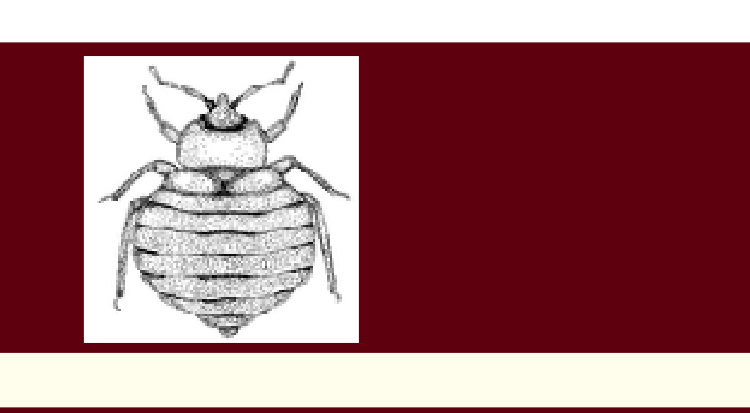
and how to detect them since 2007

The use of dogs to decent the scent of bedbugs has become increasingly common in the last few years. In the same way that Police and Customs dogs are trained to detect drugs and firearms samples are used to train dogs to locate infestations.
Dogs have the ability to detect trace amounts of faint odours as their smell receptors are more numerous than humans and can reportedly detect smells at concentrations 100 million times lower than humans.
Ideal for detecting low level infestations and screening large areas detection dogs can be a useful tool in identifying an infestation.
Scent detection alone however can not be considered to be confirmation of an infestation which can only be done by finding the signs of an infestation.
To be accurate and efficient in detecting infestations the scent detection dog and handler MUST work together in partnership and train on a regular basis and should only be rewarded on confirmed infestations detected, to reward without confirmation encourages false positives.
In selecting a bedbug scent detection team you should always confirm the credentials of the dogs trainer, confirm the accuracy and experience of the handler (always be cautious of any claims of 100% accuracy) and finally the methods used to positively confirm an infestation. If they are prepared to treat the area on the recommendation / findings of a dog alone then you are unlikely to be getting the highest possible standard of treatment.
Dogs and handlers should also be trained and maintained in the specific environments that they work within. Experienced scent detection professionals will confirm that certain dogs work best in certain environments and a dog that works well in all settings in a wonder dog indeed.
The training of bedbug dogs is a specific skill and requires access to live bedbug material and appropriate training environments it is not something that should be attempted by anyone without experience in training dogs for scent detection.
Checklist
To help you confirm an infestation prior to treatment starting we have developed an inspection confirmation check list in conjunction with BedBugger.com. It is designed to help you ensure that an infestation is confirmed through identification of the physical signs of bedbugs.
The K9 teams below have all confirmed that they conduct visual inspections to confirm K9 identified bedbug infestations to ensure that they are as accurate as possible and only recommend treatment once an infestation has been visually confirmed.
|
Location |
Company Name |
Web site |
|
London |
Bed Bugs Limited |
|
|
Gatwick |
Merlin Envrionmental |
|
Location |
Company Name |
Web site |
|
New York, USA |
Dana Pest Control |
|
|
New York, USA |
Top Dog Bed Bug Detection Service |
|
|
Maple Ridge, Canada |
Bed Bug Mutts |
As the use of dog units for the detection of bedbugs has become more widespread it has also become apparent that there is a need for better regulation and definition within the industry. There are some existing industry generated codes but non to date has been written in conjunction with consumer advocacy groups which we feel is an essential step to providing a truly professional service to customers.
Below we have outlined what we feel are the essential components of such standards so that people can have an informed discussion on them.
1.0 Before treating a property an infestation of bedbugs MUST always be confirmed.
1.1. The presence of bites or assurances by occupants that bedbugs are present should be considered carefully but physical confirming signs of an infestation MUST always be sought.
1.1.1. It is not possible to tell from an apparent bite if it was caused by a bedbug. Bite reactions vary, and bites from other insects may have similar appearance to those of bedbugs.
1.1.2 Skin infections and conditions can also look like insect bites.
1.1.3 Technicians must confirm that the pest is the bedbug, Cimex lectularius, and not any of the closely related bugs that infest bats and birds, which require different control tactics.
2.0 The only confirming physical signs of an infestation being present are:
- Live samples
- Cast skins
- Faecal traces - confirmed a confirmation kit such as BedBugBlue
- Eggs - hard to find so best not focused on
- Ureaic traces may also be considered confirming although they are less commonly detected.
2.1 If confirming signs are not present efforts should be made to ensure the infestation is confirmed through the use of alternative detection such as K9 scent detection and monitoring.
1.0 Bedbug detection dogs MUST maintain current certification from an independent 3rd party organisation with clear published standards. To avoid conflicts of interest board members of a certification body can not be involved with the certification of their own units.
2.0 To avoid any potential for a conflict in interest any scent detection conducted in conjunction with a pest control service provider or in association with a pest control service provider MUST clearly indicate the confirming signs of an infestation to the client before treatment starts.
Notes: Although there are a significant number of independent K9 units operating there are some which operate within a broader pest control group. Either option should be equally effective in detection but clearly has a potential for a conflict of interest if the client does not have full disclosure of any arrangements between all parties.
3.0 Companies are required to make prospective clients aware of their ongoing training and quality assurances programs and are encouraged to provide evidence such as logs of training activity or a recent audit of such logs.
3.1 Companies must provide a clear description of their training standards including what test materials are being used and what alternative lures are being employed via their website so that consumers can make a clear and informed decision.
3.2 The exact nature of the training lure must be made available to the client for consideration and will include what materials are present in the test vials.
3.3 If the apartment is cleared of activity the client should be given the opportunity to hide the lure within the property to offer a control detection step. This will illustrate to the client that there is no risk of a false negative screen.